Fall Leaves and Your Lawn: 5 DOs and 5 DON’Ts for a Thriving Yard!
As the temperatures start to cool down and the leaves begin to fall, your lawn can easily be overlooked. However, autumn is a crucial time for properly taking care of your yard. In this article, we will provide 10 essential DOs and DON’Ts to help you maintain a healthy and thriving lawn through the fall season.
Fallen leaves may add a touch of color and charm to your landscape, but they can also pose challenges to the overall health of your lawn. Understanding the best practices for managing leaves and caring for your yard during this season will ensure that your lawn stays vibrant, nourished, and ready for the colder months ahead.
So, let’s dive into the 5 DOs and 5 DON’Ts that will guide you in creating the perfect environment for your yard during the fall, increasing its resilience and beauty for the upcoming seasons.
Follow these expert tips, and your lawn will thank you for your dedicated efforts.
Do Rake Your Leaves Regularly
Raking leaves regularly during the fall season is an essential task to maintain the health and appearance of your lawn.
When leaves accumulate on the grass, they can block sunlight and water, hindering the growth of your lawn.
Here are a few pointers to help you with raking:
- Choose the right tools: Invest in a good-quality rake, preferably one with wide tines and an ergonomic handle. Wider rakes help you rake more leaves in less time while an ergonomic handle can reduce strain on your wrists and back.
- Wait for all the leaves to fall: While it may be tempting to rake as soon as the first leaves begin to fall, it is more time-efficient to wait until a majority of the leaves have fallen. This way, you won’t have to rake multiple times in the same area.
- Mow the leaves: If the leaves aren’t too deep, you can run your lawn mower over them. This method chops the leaves into smaller pieces which can be beneficial for your lawn’s health.
- Rake in sections: To make the task of raking leaves more manageable, divide your lawn into sections and tackle one section at a time.
- Stay on top of it: Raking is most effective when done frequently. Try to rake your leaves once a week during the fall season.
By following these tips and making raking a regular part of your fall lawn care routine, you’ll ensure that your yard is healthy and vibrant. After all, a well-maintained yard is a beautiful reflection of the care and effort you put into it.

Do Mulch Leaves with a Mower
Making the most of fallen leaves during the fall season is a great way to maintain a healthy yard. Rather than raking and bagging the leaves, consider using a lawn mower to mulch them. This method has multiple advantages:
- Providing nutrients: Mulching leaves with a lawn mower breaks them down into small pieces, which are then decomposed by earthworms and microorganisms. These decomposed leaves turn into organic mulch, which serves as a natural fertilizer and promotes a healthy lawn.
- Saving time and effort: Using your lawn mower to mulch leaves is faster and less labor-intensive than raking and bagging the leaves. With just a few passes, you can quickly cover your entire lawn.
To effectively mulch leaves with your lawn mower, follow these tips:
- Choose the right mower: Use a rotary mower, as it effectively chops up a variety of leaf types with just a few passes.
- Mow regularly: Mow based on the rate at which leaves fall and collect on the lawn, rather than just the grass growth. Aim to chop up a thin layer of leaves, approximately an inch, each time they cover the turf.
- Consider a mulching blade: If you have many leaves to mulch, you might invest in a special mulching blade for your lawn mower, which will make the process even more efficient.
With this approach, you can save time, effort, and promote a healthy, nutrient-rich lawn, all while making the most of your fall leaves.
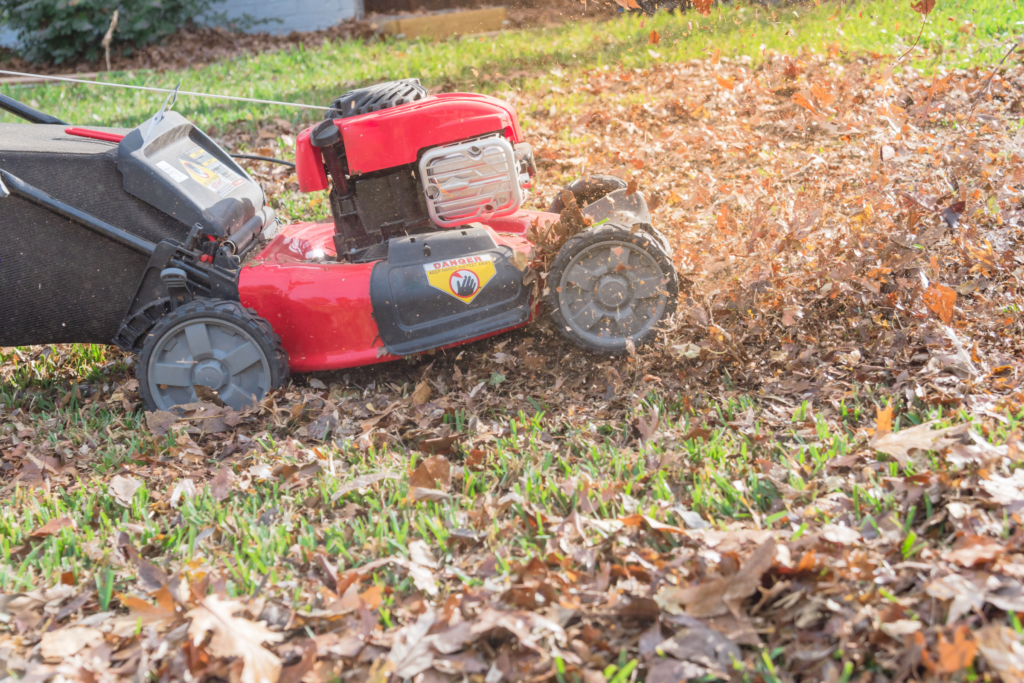
Don’t Pile Leaves on the Grass
Fallen leaves can be a delightful sight during autumn, but it’s essential to avoid piling them on your grass. When leaves accumulate on your lawn, it can create several issues that negatively impact the health of your grass blades.
Leaving an excessive amount of fallen leaves on your grass can lead to smothering. This happens when the layer of leaves becomes too dense, blocking sunlight and airflow to your grass blades.
To prevent this issue, make sure to:
- Check the leaf coverage on your lawn. If less than 20% of your lawn is covered, you can leave the leaves as they are. However, if you can barely see the grass, take action to clear those leaves away.
- Ensure the fallen leaves are only present in a few spots, such as below trees, and not piled. The layer should be thin, and the leaves should be small in size.
Another problem that may arise when leaves are left on your grass is the development of pests and diseases. The damp, dark environment created by a layer of leaves provides the perfect breeding ground for fungi and insects, ultimately deteriorating your lawn’s health.
To avoid this, always:
- Rake or mow fallen leaves regularly, especially if they are wet or starting to decompose.
- Monitor your grass for any signs of pests or diseases, such as weakened grass blades or discolored patches.
Maintaining a healthy yard doesn’t mean you have to waste the valuable resources those fallen leaves provide.
You can still make good use of them by doing the following:
- Create a compost pile: add the fallen leaves, along with other organic materials, to your compost bin. This will produce rich, nutrient-filled compost to feed your plants and lawn.
- Make leaf mold: store the leaves in a container, wet them, and provide airflow by poking holes in the container. Flip the container after six months, and in 12-18 months, you will have a valuable organic amendment for your garden and lawn.
Remember to keep an eye on your lawn during the fall season. By avoiding leaf piles on your grass and proactively managing fallen leaves, you can ensure a healthy and vibrant yard throughout the year.
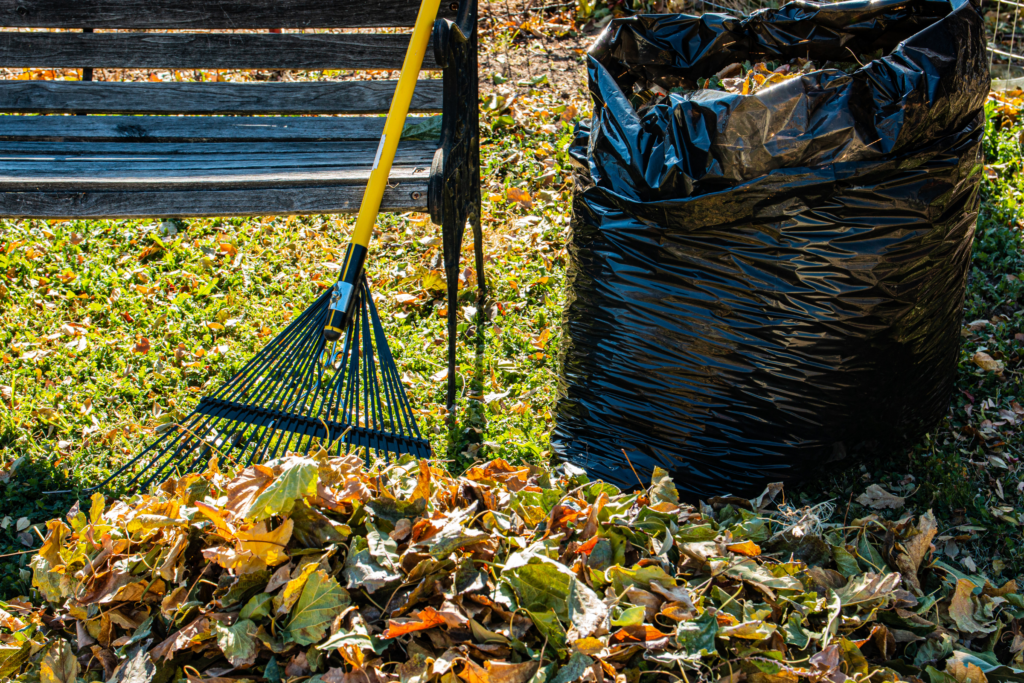
Do Compost Your Fall Leaves
Fall is the perfect time to collect leaves and turn them into valuable compost for your lawn. Composting leaves provides several benefits, such as reducing yard waste sent to landfills and creating nutrient-rich soil that will help your garden and yard flourish. Here are some tips on how to effectively compost your leaves:
- Collect the leaves: Rake or gather fallen leaves from your yard. You can also shred them using a lawn mower or leaf shredder for quicker decomposition.
- Create a compost pile: Find a suitable location to start your compost pile. Make sure it’s not too close to your home, to avoid attracting insects or rodents. Start with a layer of leaves, then alternate with layers of green materials like grass clippings or kitchen scraps to provide the necessary nitrogen for the microorganisms that break down the organic matter.
- Turn the pile: To help speed up the decomposition process, turn your compost pile regularly with a pitchfork or garden fork. This will introduce oxygen and distribute the microorganisms throughout the pile.
- Balance the nitrogen: While leaves are a rich source of carbon, they lack nitrogen. To maintain a healthy compost pile, add other nitrogen-rich materials, such as coffee grounds, manure, or green garden waste. This will ensure the microorganisms have enough nitrogen to properly decompose the leaves.
- Keep it moist: Your compost pile should be damp, but not soaking wet. If it’s too dry, add water occasionally. On the other hand, if it’s too wet, turn the pile more often and add some dry materials like shredded leaves.
By composting your leaves, you can create a nutrient-rich addition to your garden and improve the health of your lawn. And, as a bonus, it’s an environmentally friendly way to dispose of autumn leaves.
So, go ahead and give it a try! Your yard will thank you.
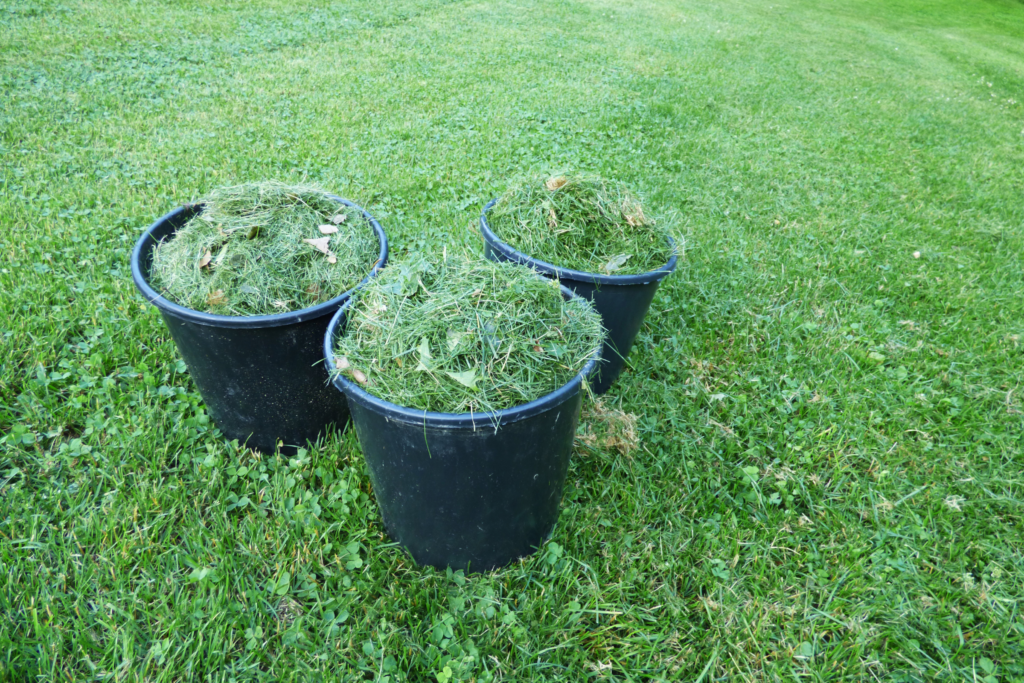
Don’t Ignore Leaf-Covered Paths and Driveways
Fall leaves can create stunning landscapes and provide nutrient-rich mulch for your garden. However, it’s essential not to ignore leaf-covered paths and driveways. Keeping these areas clear from leaves is crucial for maintaining a healthy and beautiful yard.
First, you should be aware that leaving leaves on paths and driveways can lead to slippery surfaces, especially when wet. This can create potential safety hazards for you, your family, and visitors. Wet leaves can also leave stubborn stains on concrete or paved surfaces, diminishing the visual appeal of your property.
Apart from the safety and aesthetic concerns, leaves on paths and driveways can also harbor weed seeds. When these seeds find a suitable place to grow, they can be problematic to control and may invade your well-manicured lawn or garden. Clearing leaves from these areas helps prevent the spread of unwanted weeds.
Here are some tips to effectively deal with leaves on paths and driveways:
- Use a leaf blower: A leaf blower can be a handy tool to quickly clear leaves from your paths and driveways. Choose a cordless or electric model to minimize noise and environmental impact.
- Consider a leaf vacuum: If you’re looking for an alternative to blowing leaves, a leaf vacuum can help pick up and mulch leaves effectively for disposal or use in your garden.
- Rake regularly: A good old-fashioned rake is still a reliable method for removing leaves from paths and driveways. Raking regularly helps prevent the accumulation of leaves and makes the task more manageable.
- Be mindful of the weather: Fall weather can be unpredictable. Plan your leaf cleanup when the leaves are dry, as wet leaves can be more challenging to remove and create slippery surfaces.
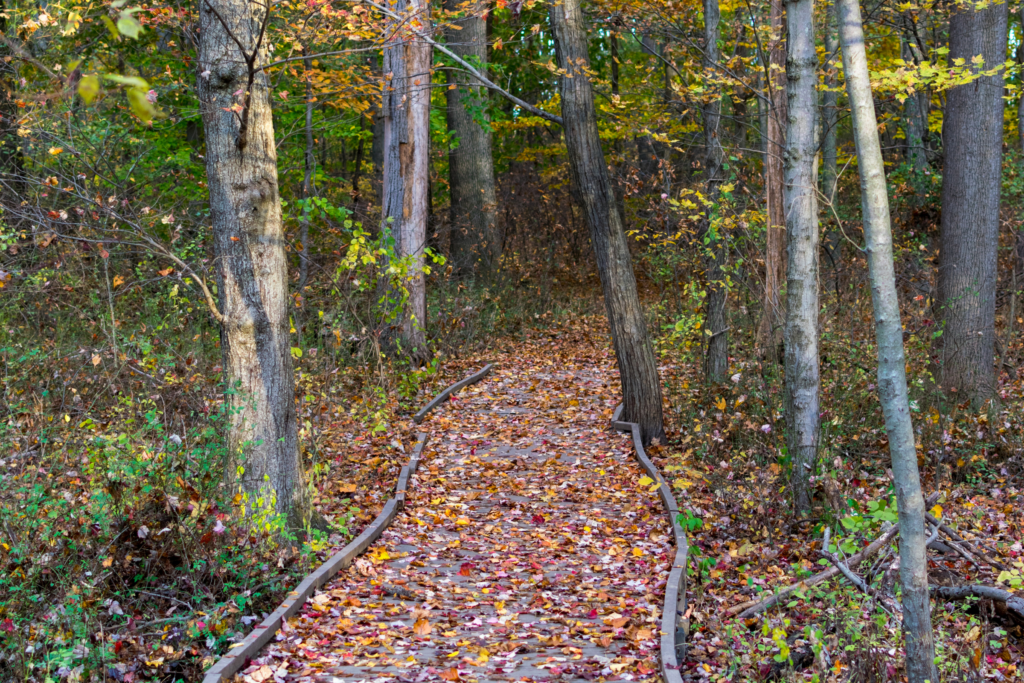
Do Use Leaves as Protective Mulch
Fallen leaves can be a valuable resource for your lawn and garden. By using leaves as a natural mulch, you can protect your plants, enrich the soil, and save money on store-bought mulch materials.
Here’s how using leaves as a protective mulch can benefit your yard:
- Enrich your soil: As leaves break down, they turn into organic matter. Earthworms and microorganisms decompose the leaves, releasing nutrients into the soil. By converting leaves into mulch, you’re enriching your soil, which promotes healthy plant growth.
- Retain moisture: A layer of leaf mulch helps the soil retain more moisture, preventing drought stress in your lawn. This is particularly important during the fall and winter months when water can be scarce.
- Insulate plants: A thick layer of leaf mulch (about 3 to 6 inches) can help protect your plants from winter’s fluctuating temperatures, providing extra insulation from cold temperatures. This is especially helpful for tender plants that may struggle in colder weather.
- Suppress weeds: Mulching with leaves can effectively reduce competition from weeds by smothering them and preventing their growth. This means less work for you and more nutrients available for your desired plants.
To make the most of your leaves as mulch, follow these simple tips:
- Shred leaves using a lawnmower or leaf shredder before spreading them as mulch. This will make it easier for the leaves to decompose and be turned into usable organic matter for your plants.
- Spread a layer of shredded leaves on top of your garden beds, and under trees or shrubs. The layer should be at least 3 inches thick, but can be up to 6 inches if you’re looking for extra insulation from cold temperatures.
- As the leaves decompose, you may need to add more leaf mulch to maintain the desired thickness. This ensures that your plants continue to benefit from the protective qualities of the mulch throughout the season.
By incorporating leaves as protective mulch, you’re making the most of a natural resource while promoting the health, stability, and vitality of your lawn and garden. So, don’t let your fallen leaves go to waste—embrace their benefits by using them as mulch for your yard.
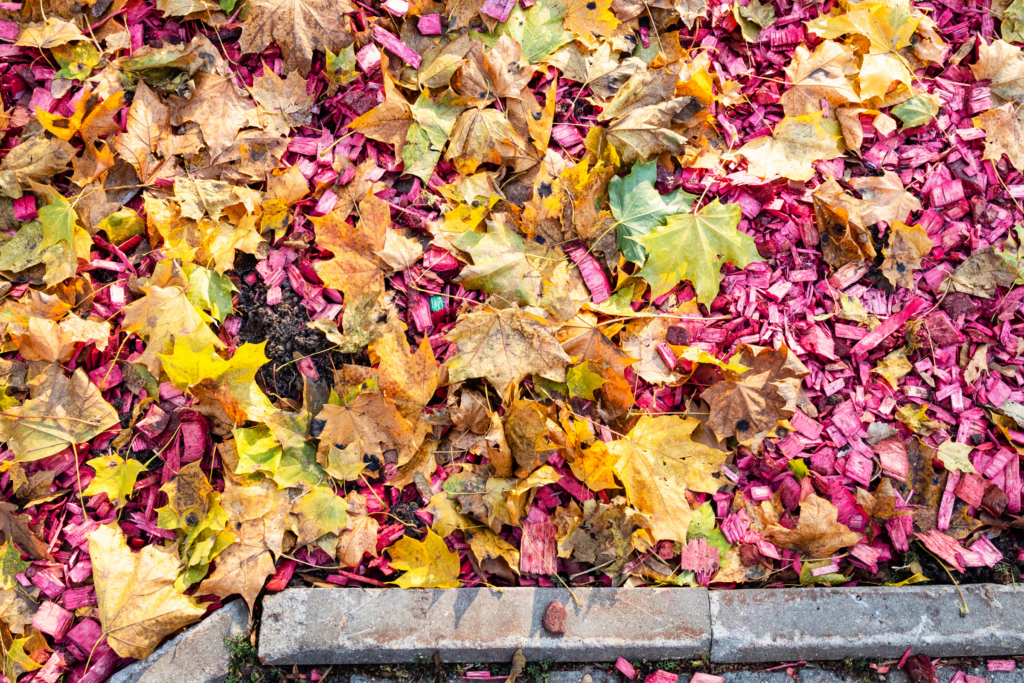
Don’t Forget to Aerate Your Yard
Aerating your lawn is an essential step in maintaining a healthy yard during the fall season. This process involves creating small holes in the soil to allow air, water, and nutrients to penetrate the grassroots. It promotes a robust root system and an overall healthier lawn. Here are some key aspects to remember while aerating your garden:
- Timing: The best time to aerate your lawn is during the cooler fall months. It ensures that the grass has the opportunity to heal and fill any open areas after the soil plugs are removed. Try to aerate once per year, but if your lawn has high foot traffic or a lot of thatch accumulation, consider aerating twice a year.
- Soil type: Different soil types require different aeration methods. For clay-heavy soil, consider using a machine that removes plugs from the ground to ensure proper aeration. If your lawn has sandy or loamy soil, using a spike aerator should suffice.
- Water beforehand: It’s essential to hydrate your lawn before aerating. A well-watered garden encourages successful aeration by allowing the machine to penetrate deeper into the soil. Water your lawn thoroughly two days before the scheduled aeration.
- Flag utilities: To avoid damaging sprinkler heads or utility lines, mark all of these areas with flags. This will help you steer clear of them during the aeration process.
Once you’ve finished aerating your lawn, consider fertilizing and overseeding to ensure a healthy, lush garden in the coming seasons. Remember that proper fall yard care practices not only promote a greener, healthier lawn but also help reduce problems like erosion and contribute to a thriving ecosystem.
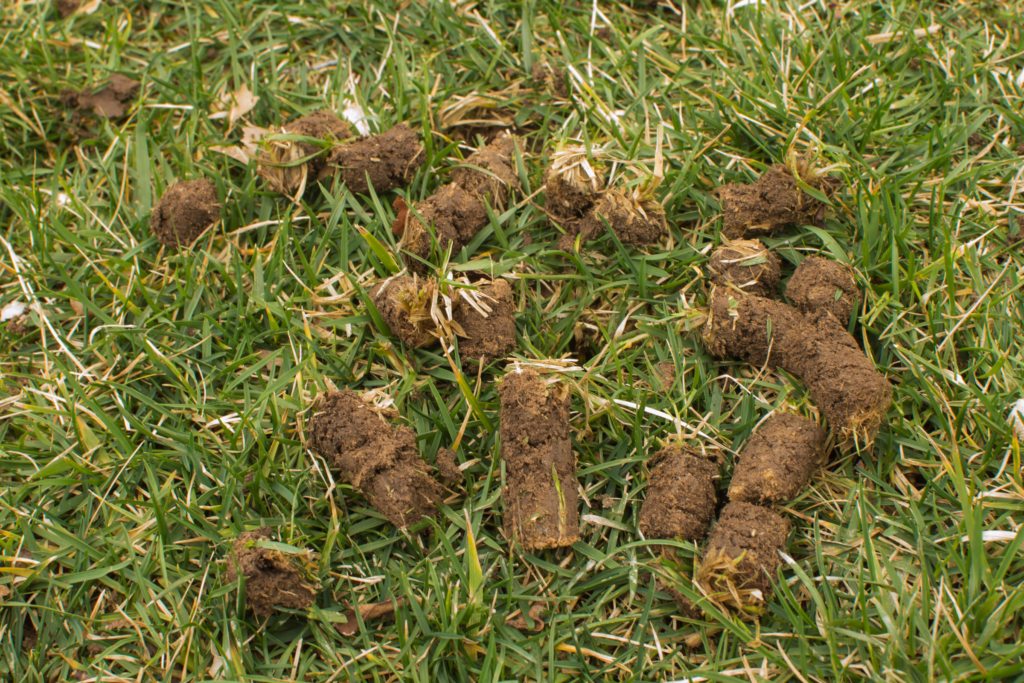
Do Water Your Lawn
A healthy lawn needs proper watering, and the fall season is no exception. Although the temperature may not be as high as it was during the summer months, your grass still requires sufficient water to grow and maintain its strength. Here are some tips on how to water your lawn effectively in the fall:
- Monitor the weather: Keep an eye on the local weather forecast and adjust your watering schedule accordingly. If it has been raining consistently, you might not need to water your lawn as much. Remember, overwatering can also harm your grass.
- Water early in the day: The best time to water your lawn is in the early morning, as it allows the grass to absorb the moisture before the sun evaporates it. Watering during the day can lead to water loss, while watering in the evening can promote mold growth.
- Water deeply and infrequently: Rather than shallow, daily watering, aim to water your lawn deeply but less often. This encourages the grass to develop a deeper root system, which is essential for a healthy and resilient lawn. You can use a screwdriver or a soil probe to check the moisture level in the soil; it should be moist at least 6-8 inches deep after watering.
By following these tips, you can maintain a healthy lawn throughout the fall season. Remember that your lawn still needs water even as the temperatures cool, so make sure to create a consistent watering schedule to keep your grass looking its best.
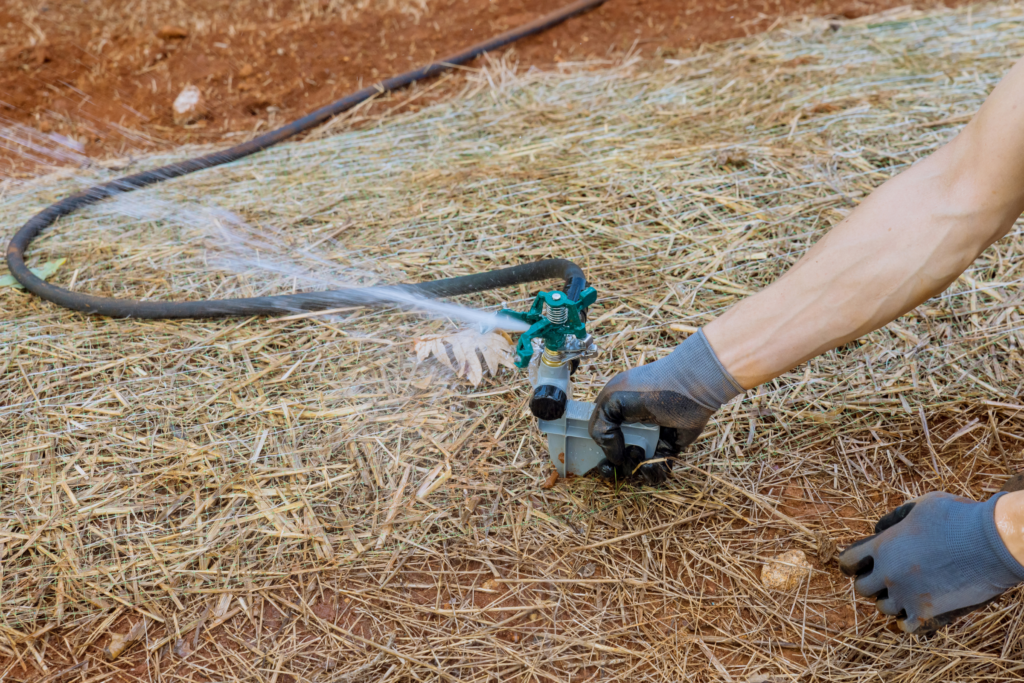
Don’t Leave Leaves on Slopes
When dealing with slopes in your yard, it’s important that you don’t allow leaves to accumulate on them. Fallen leaves on a slope can create several problems for the health and safety of your yard. Here are a few reasons to be diligent about removing leaves from sloping areas:
Firstly, leaves can lead to soil erosion. Accumulated leaves can prevent rainwater from penetrating the soil, causing it to flow down the slope, taking valuable topsoil with it. Erosion reduces the quality of soil and can damage the root systems of plants and trees in the area. To avoid this, make sure to regularly remove the leaves from slopes in your yard.
Secondly, leaves on slopes can make the area slippery and dangerous. Wet or decomposing leaves create a slippery surface that poses a hazard to you and your family, especially during rainy weather or when the temperature drops. Prevent accidents by promptly raking or blowing leaves off the sloped areas.
Third, leaving leaves on slopes can lead to the growth of harmful fungi and pests. Decaying leaves provide a moist and dark environment that breeds fungi and harmful insects, which can then spread to other areas of your lawn or garden. To maintain a healthy yard, remove leaves promptly and properly dispose of them.
Here are a few tips on how to manage leaves on slopes:
- Rake leaves gently to avoid damaging the soil or grass underneath.
- Use a leaf blower set on a low setting to prevent disruption of the soil.
- Collect and dispose of leaves, either by composting or using them as mulch in other areas of your garden.
- Schedule regular leaf removal during the fall season to keep slopes clear and safe.
By following these guidelines, you’ll be able to maintain a healthy and safe yard throughout the fall season.
Let Us Know How We’re Doing!
Did this expertly prepared resource answer your question?
Do you have another question about home maintenance, home improvement projects, home appliance repair, or something else?
Get more information, send in questions and keep the discussion going by contacting the I’ll Just Fix It Myself company customer service team at at 1-800-928-1490 or Email us at [email protected]
